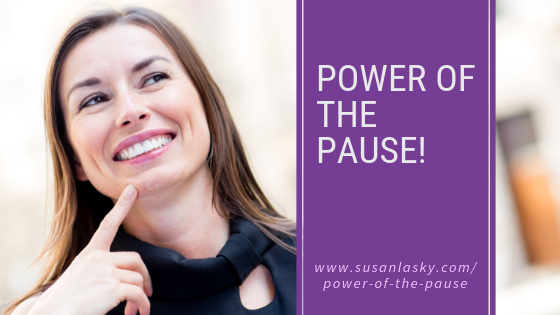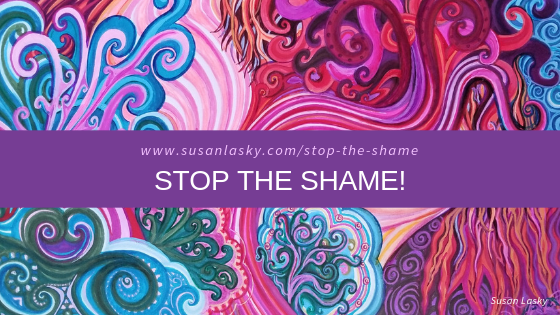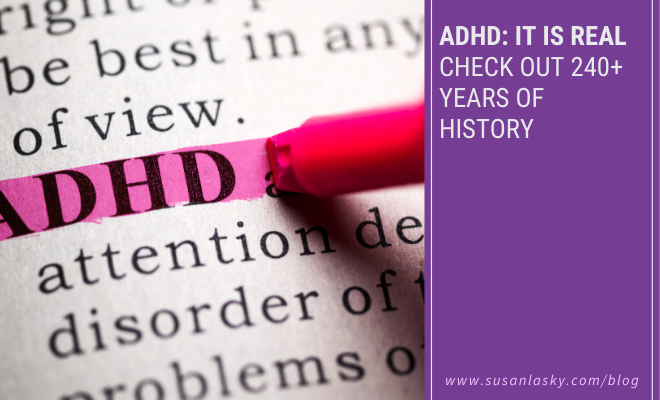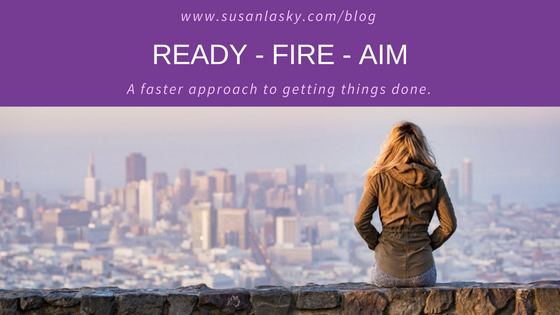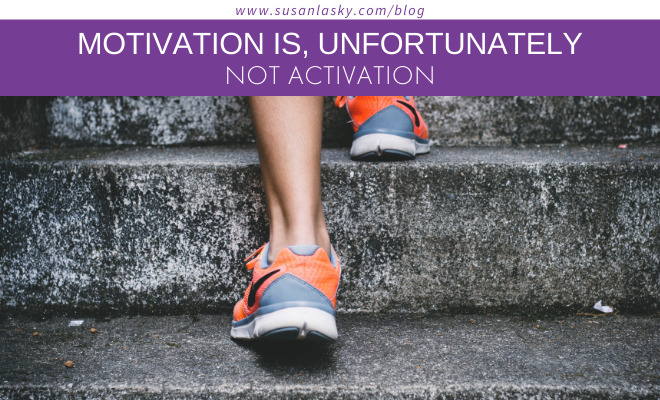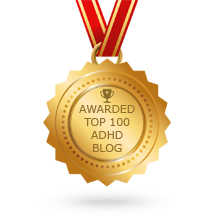
by Susan Lasky | Jan 25, 2022 | ADD - ADHD, Attitude, EF - Executive Function, Perspective, Problem-Solving, Procrastination, Productivity
But I Don’t Feel Like it! …
I was all set to write my next blog post. Great Idea. Gives me joy to share information and helps me to stay in business so I can keep helping clients. I had the time blocked on my calendar for today… but I don’t feel like it!
The funny/sad thing about “…But I don’t feel like it” – those six short words wield a mighty power, and it’s not for good. We think them frequently, or at least many of us do, yet they are the Destroyers of Productivity (and they don’t do much for self-esteem).
Today the conversation was about writing a blog, but it is a frequent flyer in my head. Here are some typical triggers that lead to this common refrain — I imagine they sound familiar to many of you.
- I ought to go to the gym…
- I should re-organize my closet…
- I need to finish this…
- I said I would…
- It’s at the top of my ‘Action’ list…
…BUT I DON’T FEEL LIKE IT!
Just six words, but powerful enough to subvert our best intentions. The enemy of getting things done.
What to do?
I coach my clients on the benefits of reframing a ‘should… must… need to… or have to…’ into a ‘want to.’ Why? Because we’re all more inclined to do what we want. But even wanting to do something can lose traction when the ‘but I don’t feel like it’ button is pressed, and it gets pressed very easily – “I’m tired… I have too much to do…. I’m not sure how to… It’s too much work… I just don’t wanna!”
These are powerful feelings. Strong enough to triumph over our already-compromised executive functioning capabilities. So, too often, we don’t take action and our temporary emotions/avoidance tendencies get top billing.
I don’t like giving in. Sometimes, sure. Being self-indulgent can be comforting, and there are times when eating an ice cream sundae or taking a nap should take precedence over staying on a diet or doing the laundry. But other times it feels like the nefarious power of ‘I don’t wanna’ is in charge, and even my best plans are unwilling hostages. So, here’s how to fight back.
- Start from your reality. Step #1 of my 7-Step PowerPlan to Success™ (download for free from https://susanlasky.com) is Self-Awareness, which means acknowledging how you really feel. If you don’t feel like it, why deny the obvious? Step #2 is Self-Acceptance. You already know all those shoulds, oughts, musts, etc., and instead of fighting the way you feel or blaming yourself, accept your mood, so you’re not adding incendiary guilt to the challenge of taking action (…or not). Avoid the trap of SCDD – Self-Compassion Deficit Disorder!
- Remind yourself that you have the power of choice. Step #3 is to Believe in Possibility – that we always have a choice. It’s easy to forget this when caught up in the moment. Still, despite the way you feel (or think), you can find strategies to do things differently, thus producing different results.
- You can take action despite your thoughts and feelings. There is a powerful concept in psychology, including Morita Therapy, the Japanese psychology of Action, that focuses on our ability to take action regardless of the thoughts and feelings that will always get in the way. The trick is to acknowledge them, including the powerful “I don’t feel like it,’ then choose to ignore them… they don’t have to be in control, even though they seem to be. Start small. If you are reluctant to go to the gym, put on your sneakers and have everything you need in a bag by the door. I’ve had clients report back that wearing sneakers ‘magically’ helped them start moving. Worth trying!
- Keep that action simple and immediate. If I think about writing a blog, it can be overwhelming. Overwhelm, especially for people with challenged executive functions or ADHD, causes stress. Our brain perceives this stress as danger, triggering the ‘fight, flight or freeze’ response. While designed to protect us, once released, we’re even less likely to get anything accomplished. So, recognizing I’ve shifted into avoidance mode, my next move isn’t to force things but to do something that will minimize stress and help me get to work. Maybe I’ll just write a few buzz words (Iike I did when I started this blog by writing, “But I don’t feel like it…”). Maybe I’ll get inspired and continue, or perhaps I won’t, but I’ve done something!
- Consider what is actually getting in the way. This may be a waste of time (we don’t know what we don’t know!), but occasionally there’s increased clarity that enables moving forward when you explore why “I don’t wanna.” The kneejerk response “But I don’t feel like it” may be a reaction to a concern that, when acknowledged, can be remedied. Perhaps your reluctance to do something might be because you aren’t sure how to get it done. Maybe you first need to do some research or create a Project sheet and break it down into small, do-able tasks. Maybe you need to ask for help. Or maybe you just have too many things to do and haven’t prioritized. Remember, The Two Magic Words for Productivity: Clarity and Priority. (This is the title of another blog post on my website.)
- Look for the options. Sometimes, exploring what is really getting in the way gives options that boost action.
- You might be reluctant to even begin straightening up your office because you think it will take most of the day. OK, how can you power up that action switch? Start by setting an alarm, then put on dance music and work for just 50 minutes. Who knows, you may even complete the job in that time, or at least make good progress.
- Or maybe you don’t want to organize your very messy clothes closet. When you explore the ‘why’ it becomes clear that part of your avoidance is frustration due to a lack of space. So, the project shifts to reviewing your clothing with an eye towards donating. As organizing guru Barbara Hemphill says, “You can’t organize clutter.” First, declutter, then you’ll find it easier to organize.
- Look for the motivators. What will encourage activation?
- It is easier to spend time working on your closet if you have a friend hanging out offering encouragement (external motivation and redirection toward the goal).
- It also helps to understand that people with ADHD are rarely driven by the common motivators of importance, consequences or rewards (unless they are immediate). But if something is interesting or novel, we’re more likely to WANT to pursue it. I know it’s easier for me to unload the dishwasher (boring and repetitive) if I make it a game to get it done quickly: Beat the TV Commercial. I recently discussed this concept with a client, and she decided the best way to clean her kitchen after dinner is to make having her favorite dessert dependent upon having a cleared counter and sink. The yummy dessert (an immediate reward) was enough of a motivator to make her want to do it.
So, how did I manage to write this blog, despite my immediate reaction of “But I don’t feel like it!”?
- I started by acknowledging my reluctance, making a bargain with myself that I’d put in the effort for just 30 minutes. (Usually, once I begin, I easily keep going, but it takes a lot to turn on the ignition to activate my engine.)
- I decided to switch my environment (a very helpful strategy). Many of my clients find they are more productive if they work in a coffee shop, library, or co-working space – even changing rooms can help. I chose to sit outside and enjoy a gorgeous day (studies show that being in nature has a way of resetting/ recharging the brain, so there’s another boost). Note: This blog was originally published during warm weather, pre-pandemic.
- My small, portable bluetooth speaker played perfect background music at low volume from my playlist (for me, wearing earbuds or earphones would have made the music my primary brain focus and been distracting, rather than enhancing).
- I filled a thermos cup with a tasty drink (self-care). No, it wasn’t wine – not a bad idea, but I was tired and would have drifted off target.
- I took along my favorite pen and a pad with smooth, thick conducive-to-writing paper (sometimes writing by hand is more inspirational than keyboarding).
- I set a clear intention and decided to put everything else on hold while I wrote. While I had my phone with me, I turned off alerts and kept it out of sight to avoid temptation. (Although yes, I still checked it periodically, sigh…)
- I then began by writing those six powerful words, “…But I don’t feel like it.”
There are many ways to overcome these Six Powerful Words. Let’s continue this conversation with your comments on my blog, www.SusanLasky/i-dont-wanna. What are some ideas that work for you?

by Susan Lasky | May 10, 2018 | EF - Executive Function, Perspective, Problem-Solving, Procrastination, Productivity
I’m laughing (okay, smiling to myself) as I write this,sinceit is somuchthe oppositeof whatI began towrite!
It started with a decision to compile some of my favorite quotes about some of my favorite topics–ADHD, Executive Function, Attitude, Organization, Parenting, Time Management, Relationships, Self-Care, Self-Fulfillment, etc.These well-phrased gems are often perfect for creating perspective on situations with which my clients (and myself) struggle.
I know that some of these ‘words of wisdom’ are originally mine (not surprising when I’ve been writing and speaking on these topics since 1989, when Hal Meyer and I published the first CHADD of NYC Newsletter). However, I know that mostare not, and so I went online to seek out sources.
I began with one quote that I know wasn’t my original, although it may have been Hal’s, or more likely Hallowell’s.

This is a great way to describe the tendency to act without thinking something through. It helps to understand some of the challenges created by the impulsive ADHD mind, and how actions taken without thinking can lead to unexpected, often negative consequences.
I thought I’d write about how important it is to be very clear about your target and goal before taking action (“Ready, Aim, Fire“), so you don’t waste or misdirect your efforts, but when I put “Ready, Fire, Aim” into a search engine, I wound up reframing my thinking about this phrase! Now I think that it can often be a better plan, since it puts the emphasis on action.
Taking action is a major challenge for many people, especially those who are very busy, cautious, or those who might have ADHD, but with a lower dose of the ‘H.’ Wanting to get it ‘perfect’ often leads to not getting it done at all… or to long hours, paralysis by analysis and missed deadlines. It’s the opposite approach to those who rush to just get something done and out of the way. Yet now I’m advocating for better balance, which can mean to just ‘FIRE’ in order to get going!
My online search led me to a blog on a fitness website that explains this really well. I know nothing about his program or the author, Keith Lai, but I loved his approach. He talks about this concept as it applies to fitness, but I see how it affects every aspect of life where we postpone taking action because we are too caught up in researching/thinking about exactly what action to take, or because we think we need to know the exact outcome of our actions. And as much as we may fantasize about it being otherwise, we can only control our actions, not the outcome.
So here’s a slightly edited version of what Keith Lai had to say – www.fitmole.org/ready-fire-aim
How to Use The “Ready, Fire, Aim” Technique to Crush Any Goal
One of the best books I’ve read recently is called Ready, Fire, Aim by Michael Masterson. It’s more of a business book on how to grow a wildly successful business than anything else (it really has nothing to do with fitness), but the lessons taught are applicable to anyone with ambitious goals, including those who want to transform their physique.
The premise of the book revolves around a concept called “Ready, Fire, Aim” which basically states: Anytime you want to reach a goal quickly, you simply need to act first, then make any necessary adjustments and correct for any mistakes later.
Let’s break it down into the 3 separate stages:
Stage 1 – “Ready”
This is the research phase where you begin researching the ins and outs of what’s necessary to reach your goal. In fitness, it might mean reading up on what’s needed for your workout or diet.
If you bought a fitness course (like my Superhero Shredding course), the “Ready” phrase means going through the course and absorbing the information.
But the secret to being successful in the “Ready” phase is to not obsess about understanding things 100%. I’ll go into more detail on Stage 1 later in this article.
Stage 2 – “Fire”
This is where you charge straight in and take immediate action (“Fire”). Even if you don’t fully understand the nitty gritty technical details of the workout or diet plan you’re on… JUST DO IT.
Inaction and doing nothing are the worst possible things in the world – there will never be a better time than now so pull the trigger ASAP.
Stage 3 – “Aim”
Now that you’ve taken action, you can gradually fix any mistakes you’ve made in the beginning, but because you’ve already taken action, making micro-adjustments will be easy.
Maybe you screwed up the first 2 weeks and just realized you weren’t getting enough protein, that’s fine, you can make that change now. You’re already light years ahead of the guy who’s still reading the diet manual, so pat yourself on the back.
Getting stuck in the “Ready” phase – The #1 reason for failure
Being stuck in the “Ready” phase is like reading 20 different dating books before ever dating a girl…
Most guys are stuck in the “Ready” phase. They spend too much time researching and not enough time doing. Why? Because it’s a lot easier to read about eating healthy than it is to actually eat healthy.
One of the biggest mistakes I made in the beginning of my fitness journey was spending months and months reading about diet information. I just kept reading and reading because I thought there was some “secret ingredient” that was missing. I thought there was something out there that I needed to know in order to get started.
But in reality, the only reason I kept reading was because I wanted to avoid putting in the hard work. Reading is a lot easier than doing as I’m sure you’ll agree.
Trust me, you know enough. There’s no secret sauce. I need to make a statement – YOU KNOW ENOUGH.
Most people know they need to eat in a calorie deficit to lose fat…
Most people know they need to get stronger and eat in a surplus to gain weight…
Most people know that fruits and veggies are good for you and you shouldn’t eat doughnuts in excessive amounts.
The basic premise of losing fat and building muscle is VERY VERY simple. And yet, people always want to complicate this shit. For some reason they want it to be complicated. Why?
Hell if I know, but if I had to guess it’s because making something more difficult rationalizes their decision to continue “researching” and stay in the “Ready” phase.
More and more people these days are getting caught up in the “science” of fitness (e.g. the best scientifically proven upper chest exercise for hypertrophy), but spending all day going through exercise research reports doesn’t do shit for you. Don’t know what hypertrophy means? Awesome, you don’t need to know.
This why a lot of the gym “bros” who seem a lot less educated, statistically, have superior physiques to the guys who just read and read and read. It’s because they just take action without overanalyzing everything. You have to admit that it’s pretty funny when the people who get the greatest results are the ones who don’t much care about all the science and theory behind fitness.
But what if “it” doesn’t work?
Last December I had a reader email me. To keep the reader anonymous, I’ll be calling him Captain Korea from this point on. Like a lot of my readers, he asked what’s the best workout to lose weight. I pointed him to one of the free workouts on my site and told him to do that.
One day later, Captain Korea emailed me back saying “This looks good, but can I add in 2 extra sets of side lateral raises? I feel like it will work better.”
*!X*#!!!*Z@!%*
The workout I gave him was a simple yet very effective 3-day split. Yet in Captain Korea’s mind, he was trying to make what was a great workout plan much more complicated than it needed to be.
Adding an extra couple of sets wouldn’t have killed him, but it’s the fact that he thought about it before even doing the workout once is what drives me insane. If Captain Korea decided to add the 2 extra sets of lateral raises after doing the workout for 4-6 weeks and decided that his shoulders were lagging a bit, then that’s totally fine.
Because by then, Captain Korea has already passed Stage 1 (Ready) and Stage 2 (Fire). Adding in the extra lateral raises is the intelligent Stage 3 (Aim) move.
“READY, AIM, FIRE” – The most common path to mediocrity
The majority of guys follow a “Ready, Aim, Fire” approach to fitness and life.
For example:
- They decide they want to do something such as workout, and begin researching and buying workout products. (Ready)
- They make sure every aspect of the workout is “perfect” by reading forums, blogs, and research reports. (Aim)
- They finally take action after weeks/months of “fine tuning” their workout plan to perfection (Fire) only to jump back into the “Ready” or “Aim” phase after a week because they don’t think their plan was perfect enough.
As you can see, this approach to fitness, and to pretty much anything in life, almost always leads to disaster and at best, mediocre short-term results.
But once you “Fire” before “Aim,” you’ll discover that your entire life changes, and achieving any goal becomes a piece of cake.
How do you approach your goals? Do you follow the Ready-Aim-Fire or the Ready-Fire-Aim model?
——————————————-
Keith Lai talks about the Ready-Fire-Aim model as it applies to diet and fitness (BTW, sound familiar?) but it applies to so many aspects of our lives. I remember working with a web designer on my first website. I got so caught up in obsessing over what colors to highlight that I gave up on working with the designer, created my own ‘temporary’ two-page site and only got back on track five years later! How many possible clients did I lose because I didn’t give enough info on my laundry-list of a two-page site? Compare that to how many would have been turned off if my color scheme (easily remedied later) wasn’t fully expressive of my personality?
Sometimes, the best course is to reasonably prepare (get READY), then jump in and act (FIRE), knowing you can fine-tune the adjustments later (AIM). Besides, by then you might have a clearer target!
I’d love to hear what you think. Join the conversation by commenting below.


